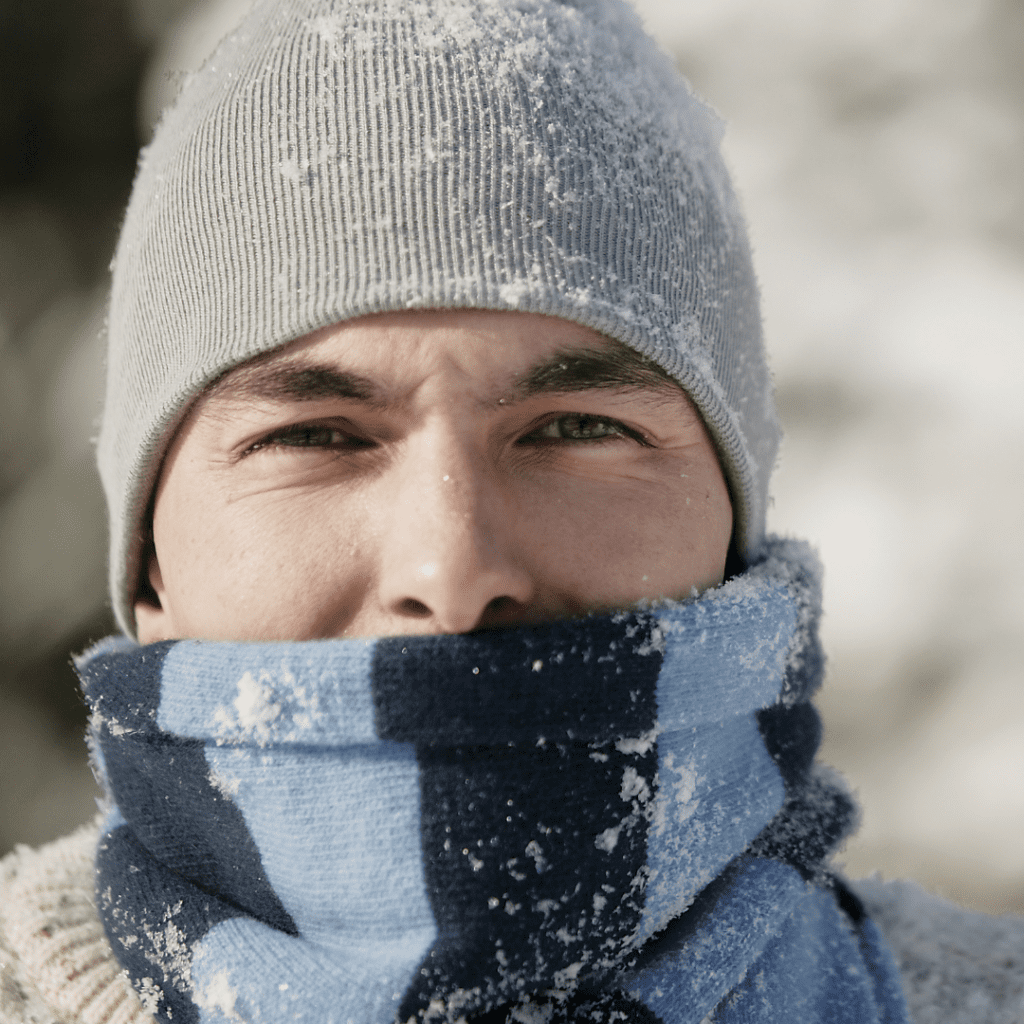

You put on the jacket when you go outside, you turn the heat up in the house and you warm up the car before you get in, but do you think about how to keep yourself safe from the cold the rest of the time?
Winter weather can lead to lots of common personal injuries. With that in mind, here are 5 tips to help you enjoy your day safely whether its cold enough outside to warrant a jacket, frigid enough to make you think about gloves, mittens and a scarf.
1. Dressing Warmly Can Prevent Cold Weather Injuries.
In the fall and the summer heat has died down, we start putting on more sweaters and sweatshirts and then eventually switch to a jacket. But when it’s truly cold outside, layering is important to be able to adjust to different temperatures.
Remember it’s easier to take a layer off than to add one when you’re away from home. So consider an extra shirt or sweater in addition to a nice warm winter coat.
And while you’re at it—keep your hands, feet and ears covered. They are more immediately susceptible to frostbite than the rest of your body.
>> Outdoor Winter Worker Checklist
2. Staying Dry Really Matters.
Hypothermia occurs when your body drops below 95 degrees. When your body’s temperature drops, it uses stored energy to try to warm up and hypothermia takes place when all of that stored energy has run out and your body can’t keep itself warm anymore.
When you get wet, your body loses heat quickly – and when it’s cold out your chance of hypothermia only increases. So when it’s cold, make sure you stay dry and warm.
In addition, hydration improves circulation, which helps keep you warm. So while you don’t want to get wet, you do want to make sure you’re drinking plenty of fluids.


3. Don’t Ignore Frostbite or Hypothermia Symptoms!
Out in the winter weather, it’s easy to dismiss the signs of coming personal injuries like hypothermia or frostbite as “just being cold.” Don’t do it!
Numbness, shivering, slurred speech and drowsiness are all signs of hypothermia. Cold prickling or numb skin; or red, white, bluish-white, grayish-yellow, purplish, brown or ashen patches on your skin are signs of frostbite. If you start experiencing these symptoms—take action! Find a warm place to go and if necessary, seek medical assistance.
>> Prepare Before the Snowstorm Strikes!
4. Focus on Traction to Prevent Slip and Fall on Ice this Winter.
When ice and snow are on the ground, or even if it is cold enough to form black ice, slip and fall injuries are a major concern. Make sure to wear footwear with good traction and be careful when walking to avoid falls.


5. Safe Heating Practices are Important.
There’s nothing quite like getting cozy in front of a fire in the fireplace. But if you aren’t careful, you might be looking at a major potential burn or fire problem.
Pay close attention to fireplaces, space heaters and any other heating devices you might have and turn them off when they aren’t in use. Also, make sure not to leave flammable materials near them.
>> Winter Fire Safety Tips for Your Home
6. Safety First With Winter Sports and Activities.
Winter sports like ice hockey, skiing, or snowboarding come with a lot of potential for injury. But even less obviously risky activities like sledding, snowshoeing and skating come with significant chances of injury, so be sure to use caution when enjoying the cold weather.
Make sure you’re properly equipped with all the right safety gear and equipment for any winter activity. Wearing warm clothes and protective equipment isn’t enough; stay aware of your surroundings, know your limits, and avoid unnecessary risks to prevent injuries.
Injured? Keches Law Can Help You With Any Cold Weather Injury.
Winter weather personal injuries are always a possibility. If you find yourself facing personal injury, remember to reach out to Keches Law.
If you or someone you know has suffered an injury, explore our Personal Injury and Workers’ Compensation services. Contact Keches Law to discuss your case.




